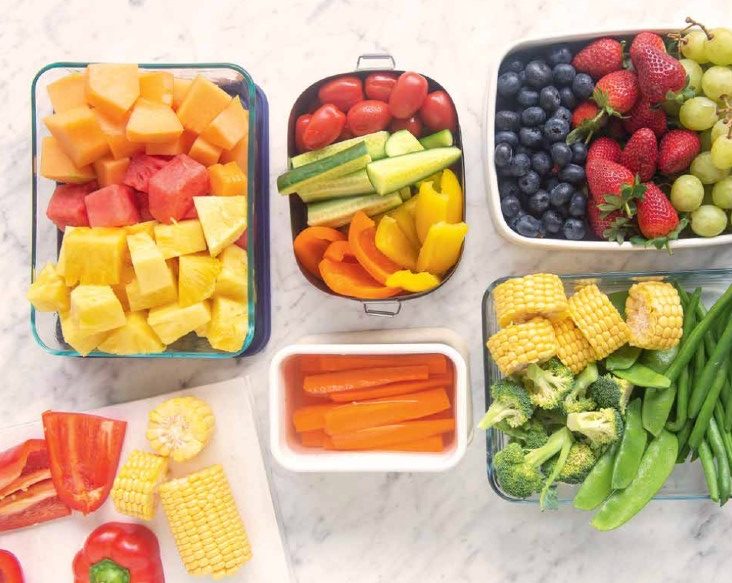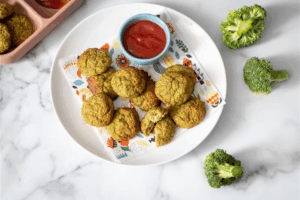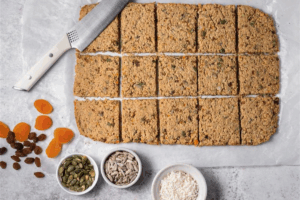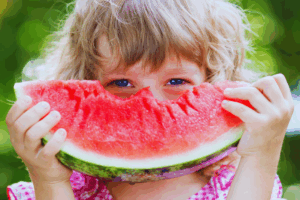WORDS: Allie Gaunt, Jessica Beston & Sarah Buckle
An easy time-saving strategy to ensure a nutritious and varied lunchbox is to have a simple checklist in your head of the different food groups to try to offer in your child’s lunchbox each day. This ensures they have key nutrients such as quality carbohydrates, protein, calcium, iron, zinc and omega-3 fatty acids to help them learn and play.
Choose quality carbohydrates
Wholegrain products (including breads, wraps, pasta, crispbreads and cereals), brown rice, quinoa and legumes are higher in fibre, B vitamins and folate than white and refined varieties. They also provide longer-lasting energy, helping children to concentrate in the classroom.
Include protein
Protein is important for satisfying hungry little appetites and helping kids to feel full. Lean red meat slices or meatballs, leftover roast chicken, lean ham, canned fish, eggs, hummus and cheese are great in sandwiches. Look to your savoury baking box for other nutritious and delicious bite-sized options to add variety if you feel your child is becoming bored with sandwiches. Cheese slices or sticks, yoghurt tubs, plain milk, nuts (depending on your child’s age and your school’s rules) and wholegrain muesli bars are also sources of protein and great for snacks.
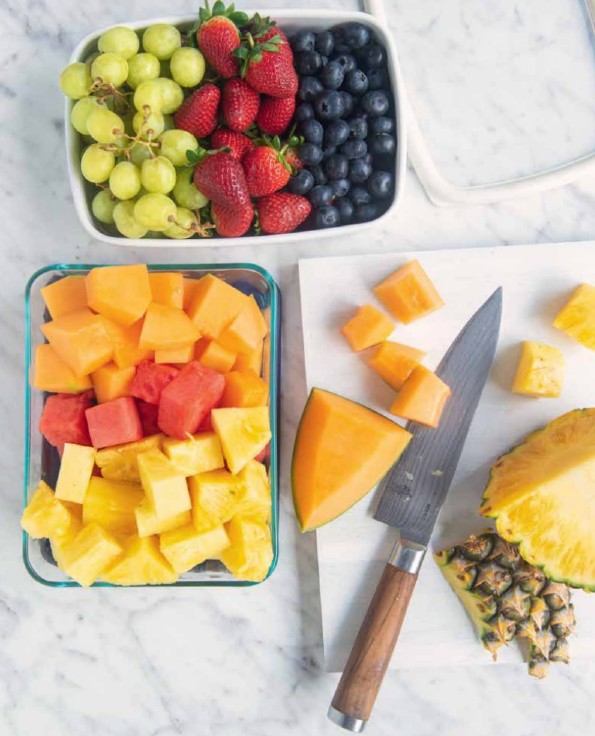
Pack vegetables
They provide a variety of important nutrients and add fibre and bulk to children’s diets. If your child is old enough to eat raw veggie sticks, pull out the veggie grab box and pop a veg or two in their lunchbox for both morning tea and lunch. Including a variety of veggies at as many mealtimes as you can throughout the day can take the pressure out of dinner, when children are often tired and are likely to refuse them. Try cherry tomatoes, carrot, capsicum or celery sticks, or even snow peas or green beans as snack options, and include salad fillings such as lettuce, grated carrot and cucumber in sandwiches. Some kids love homemade dips and deconstructed or leftover salads, and these can help with enjoyment and acceptance of veggies.
Provide fresh fruit
Whole fruit is a more satisfying, nutritious and high-fibre option than juice or processed fruit snacks, plus it’s lower in sugar and energy than dried fruit. Fruit that is local and in season is most likely to be cheapest, tastiest and most nutritious. Mix up the fruits you offer in lunchboxes by using sliced apples, whole bananas, mandarins, orange wedges, berries or whatever else is in season and in your fruit grab box.
Include water as a drink
Pack frozen water bottles or add ice cubes to their drink bottle if your child prefers colder water – especially on hot days. Try to avoid juices, cordials and soft drinks.

A note about ‘sometimes foods’
Consistently providing healthy, varied foods at home and in lunchboxes means there is always room for ‘sometimes foods’. These are things like popcorn, crackers, chips and other pantry staples that are eaten around more nutritious foods. They also include sweeter home-baked goods, such as those in the sweet baking box list on p. 30, flavoured yoghurts and milk, and mini chocolate bars. These offer another source of energy for active kids who are always hungry and growing fast. We like to buy these in larger packets to then distribute into containers or the smaller sections of bento-style lunchboxes. It reduces plastic waste and litter and supports the nude-food movement at schools. ‘Sometimes foods’ are an important part of normal eating and also help to prevent your children from feeling ‘lunchbox envy’.
If this is new to you, or your child prefers the same food prepared in the same way every day, give yourself a little time to find your new groove and a balance between what they love, what they’re learning to love and what you’d like them to love! You can transition slowly and stretch them sensitively.
Incorporating lunch orders
If your school canteen offers lunch orders and your budget allows for them, they can be a fun part of the weekly, monthly or term lunchbox routine. We do love a Friday lunch order for an end-of-week break, but you may prefer a Monday or mid-week order and then use that day to get organised or catch up. Most schools have some nice nutritious options and it’s a good opportunity for kids to try something new. Enjoying food they have chosen is a
positive meal experience and we are all for that.
Appetite for lunchboxes
How much food to pack in lunchboxes is a question we’re asked often. Every child is different in terms of how much food they eat at school. Some love a little of many options, while others enjoy fewer options and some are in between. Referring to our simple ‘Build a healthy lunchbox’ checklist, offering all the food groups across morning tea and lunch, and offering varied meals and snacks at home, will ensure you are doing everything you can to give your child an array of nutritious foods, regardless of how much or little gets eaten.
If their lunchbox consistently comes back empty: check in with your child and see if they have enough to eat. It might be that you are packing just the right amount, or they may request an extra item or two. Growth spurts and developmental leaps also influence their appetite. We find rainy days, where they sit inside to eat, good days to pack a bit extra as they have time to eat without the rush to run out and play.
If their lunchbox is half-eaten: are the same types of foods coming back uneaten? Are the sandwiches becoming soggy? Do the carrots take too long to chew? Is there too much food? Try varying how the veggies are offered – ensuring they are easy to eat – modifying the sandwich fillings and perhaps reducing the quantity just slightly for a few days.
If their lunchbox is regularly untouched: too much food can be overwhelming for some children – or sometimes, after sitting down in the classroom for a while, they just want to run and play when the bell rings. Perhaps reduce the quantity and variety each day but still maintain variety throughout the week, allow them a say in which foods are packed, and prepare their food so it’s easy to eat and enjoy. If they begin to eat more, slowly add more.
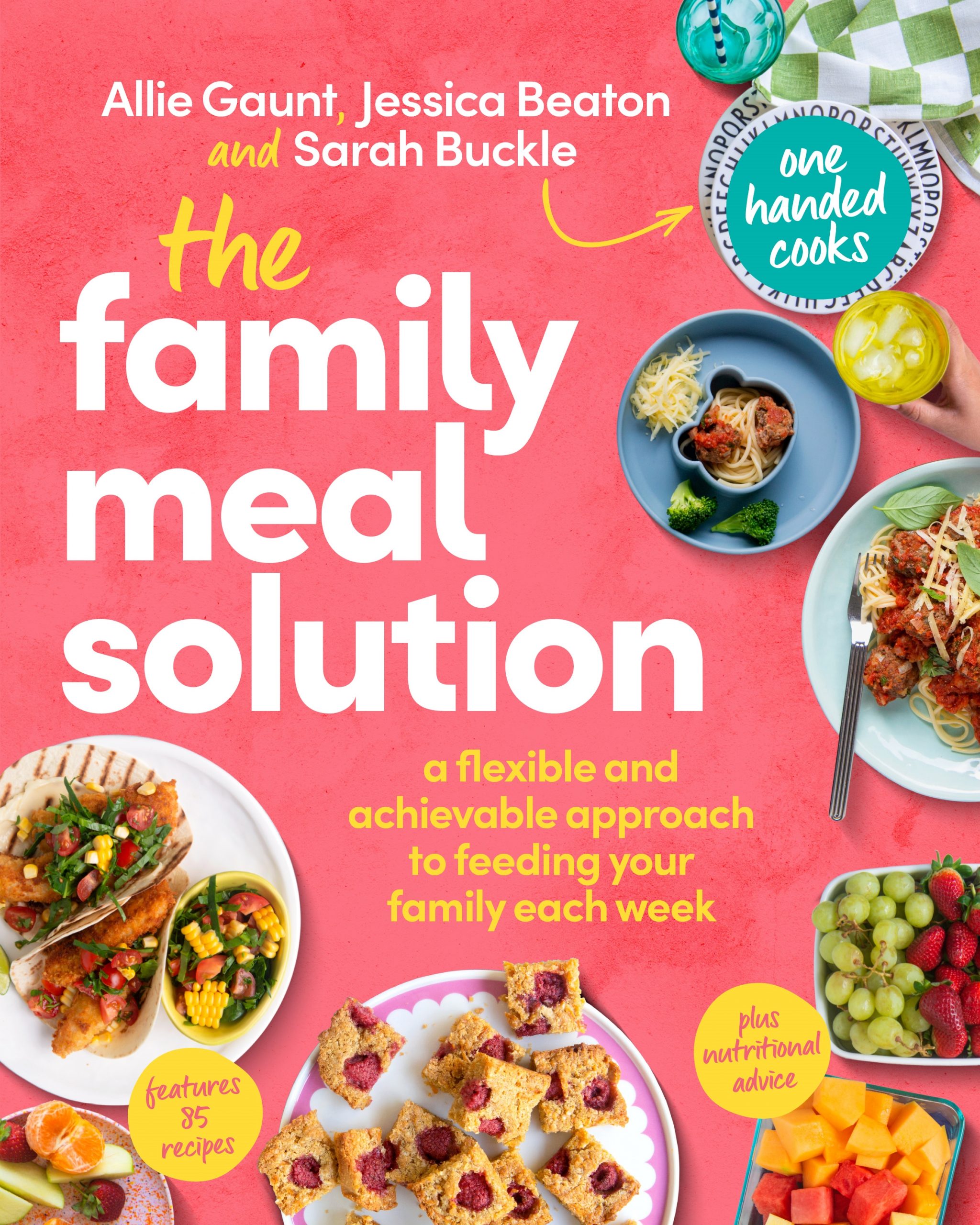
This is an extract from The Family Meal Solution by Allie Gaunt, Jessica Beaton & Sarah Buckle.
Published by Penguin Random House Australia, RRP $39.99.
